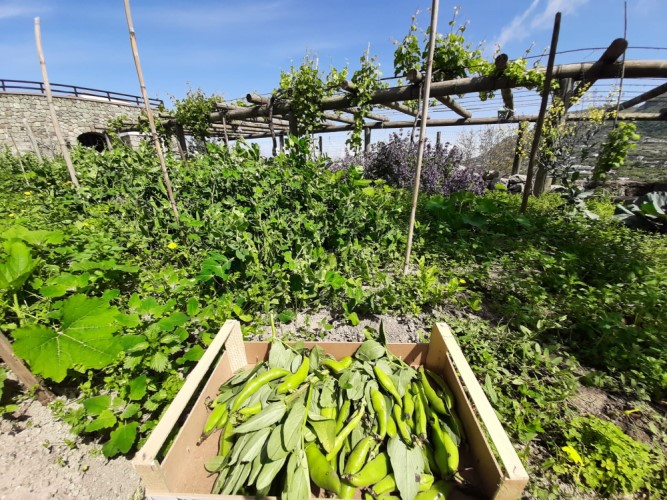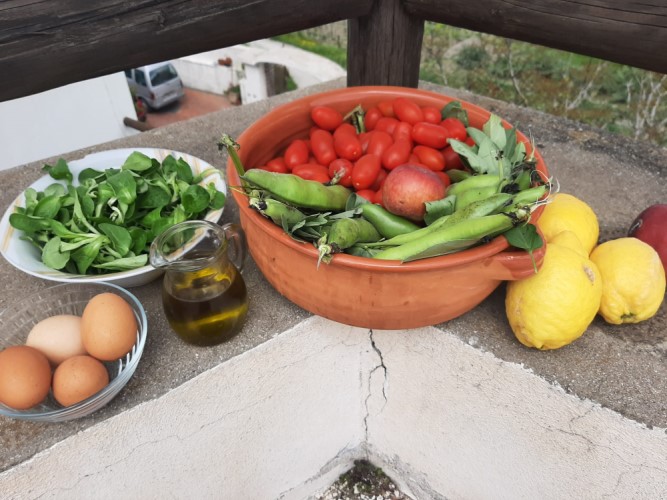Fava beans & ventresca: the Ischian aperitif

Fava beans in Ischia
Have you never tasted fava beans with ventresca? If not, you must run in Ischia to remedy!
It is a typically Spring dish that is usually eaten during Easter, according to the birth of the first fava beans of the gardens. Indeed, the best period is between April and May, because after May the fava beans harden and are preserved for the Winter after have dried them up. In this case, it is said that the fave beans are arrennute (dry) and so no more fresh to eat.
A Santa Restituta ‘e fave so’ arrennute ‘e quaglie so’ fernute ‘e turche so’ partute. To Santa Restituita (on the 17th of May) the fava beans are dry the quail are end the Turkish left.saccheggio dei pirati saraceni allontanati grazie all’intervento della santa protettrice dell’isola
How to best prepare the typical aperitif of the island of Ischia

Fava beans in Ischia
Fava beans and ventresca represent some of the greatest expressions of peasant cuisine. A fantastic main dish or aperitif!
The noble fava beans, fresh and tender in season, meet the ventresca (pig belly) with its strong, sapid and fragrant flavour.
Accompanying them is crusty bread made with criscio (grey): after many hours of leavening, it is placed in oven firewood. In past and still today, the local women used to share the shift work for making bread: in rotation, one made the bread for the others and the next day was the turn of another one, etc.
That's what the buttery flavour of ventresca perfectly mixes with the freshness of fava bean that cleans the mouthfeel and prepares it for the next bite. If that you are a glutton, you must try it with non-mature cheese, like Caciotta or Provolone.
What is the right matched wine? Maybe the Biancolella, DOC wine of Ischia!
Fava beans with ventresca is a very good combination for an aperitif, in particular, if you are in Ischia.
Alternative ways to taste fava beans and ventresca

Vegetables in Ischia
In addition to the traditional way to eat fava beans and ventresca, we propose you also other ways...
A tasty starter with mint, parsley and onion. To prepare it, you need to:
- cut the fava beans;
- push softly to let go out the seed;
- put the cut fava beans apart;
- simmer in the pan the ingredients in the following order: ventresca (adding maybe even a little of pancetta), onion, parsley, mint and in the end fava beans;
- blend with wine, add salt, pepper and let it cook for twenty minutes. In the end, garnish the dish with a little mint leaf.
An idea for the main course is pasta with fresh fava beans and ventresca. An important ingredient for this recipe is fresh garlic, another typical product of Ischia during the Spring season.
To prepare it, you need to:
- cook the fresh fava beans with skin in lightly salted water for 30 minutes.
- In the while, prepare a rich fry with garlic (included the stem cut into strips), roughly chopped pieces of ventresca, olive oil and chilli.
- When the cooking of fava beans start, prepare the ingredients to let flavour in the oil the fresh garlic and "to relax" the ventresca.
- Start to cook the fry with pasta.
- Remember to add salt to the cooking water.
- After 6 minutes of cooking, drain the pasta with fava beans and pour everything into the pan, while the fry is still cooking.
- Mix everything over high heat, adding salt and pepper, according to the flavouring of ventresca, and also with some scoop of the cooking water.
- Add grated parmesan and pecorino cheese and the pasta is ready.










Lascia un commento